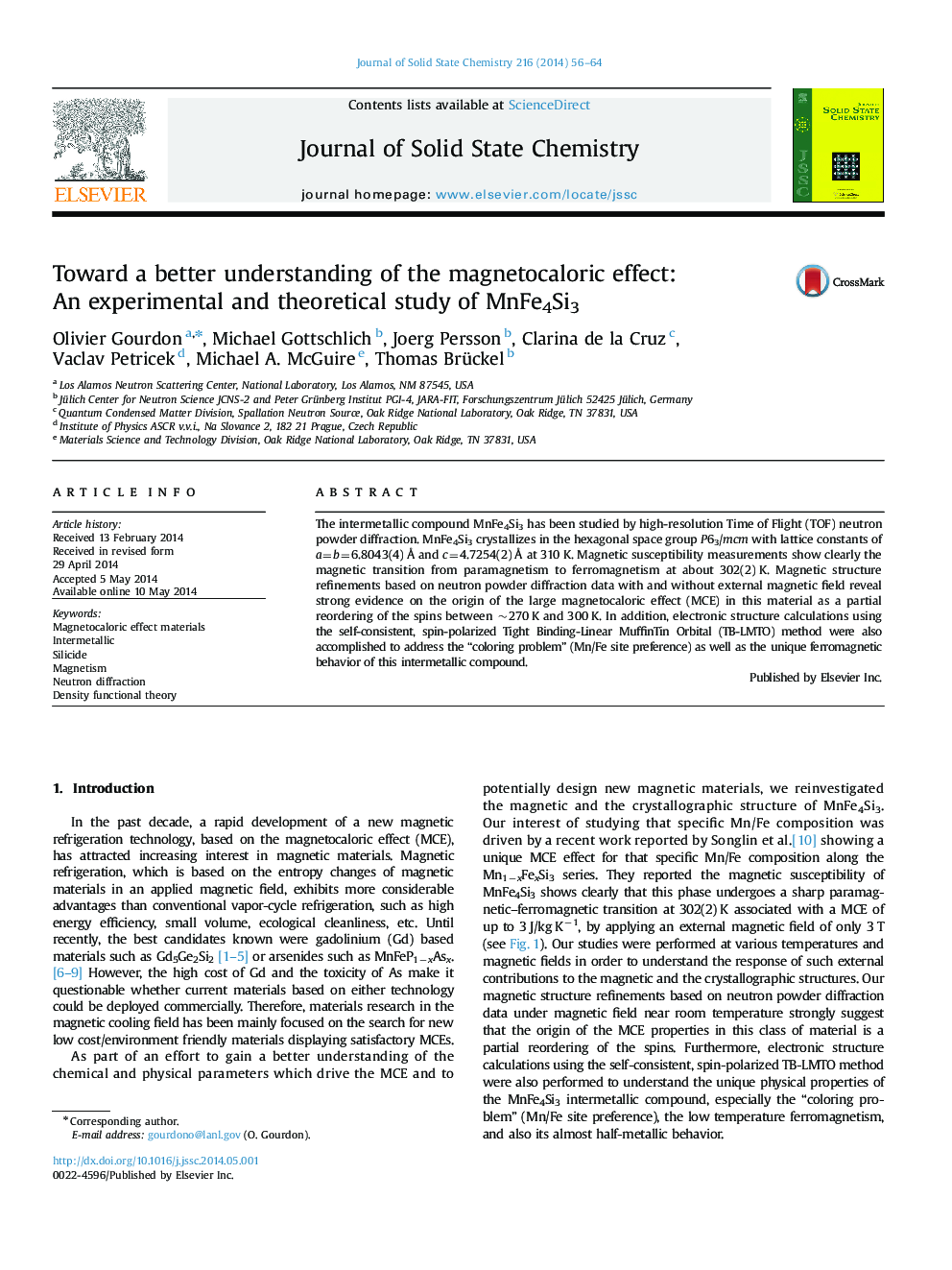| Article ID | Journal | Published Year | Pages | File Type |
|---|---|---|---|---|
| 1330308 | Journal of Solid State Chemistry | 2014 | 9 Pages |
•Strong magnetic transition from paramagnetism to ferromagnetism at about 302(2) K.•MCE associated to a partial reordering of the spins between ~270 K and 300 K.•DFT calculations show strong relation between MCE and spintronic materials.
The intermetallic compound MnFe4Si3 has been studied by high-resolution Time of Flight (TOF) neutron powder diffraction. MnFe4Si3 crystallizes in the hexagonal space group P63/mcm with lattice constants of a=b=6.8043(4) Å and c=4.7254(2) Å at 310 K. Magnetic susceptibility measurements show clearly the magnetic transition from paramagnetism to ferromagnetism at about 302(2) K. Magnetic structure refinements based on neutron powder diffraction data with and without external magnetic field reveal strong evidence on the origin of the large magnetocaloric effect (MCE) in this material as a partial reordering of the spins between ~270 K and 300 K. In addition, electronic structure calculations using the self-consistent, spin-polarized Tight Binding-Linear MuffinTin Orbital (TB-LMTO) method were also accomplished to address the “coloring problem” (Mn/Fe site preference) as well as the unique ferromagnetic behavior of this intermetallic compound.
Graphical abstractTheoretical and experimental reinvestigation of the magnetic structure of MnFe4Si3 for a better understanding of its large magnetocaloric effect (MCE). Figure optionsDownload full-size imageDownload as PowerPoint slide
